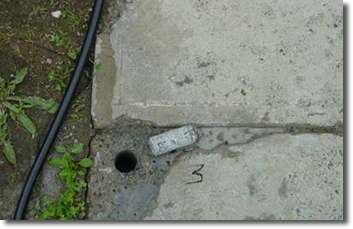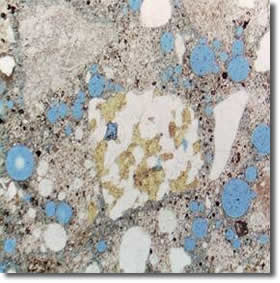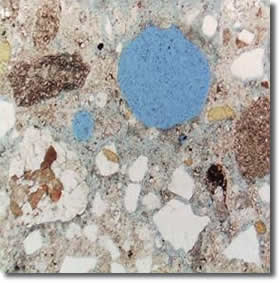A Case Study in Sidewalk Failure
Our client, a major developer, observed the sidewalks in his new housing development falling apart six months after construction. He requested that we subject a specimen to petrographic analysis. This type of analysis would show the cement, sand, aggregate rock and air voids, all of which are found in concrete.
To proceed, we cut round cores from areas that were damaged. Each of the cores was carefully labeled "Top" for the surface and "Bottom" for the soil side of the sidewalk. We took five thin slices, impregnated them with epoxy and mounted them on glass slides to be polished so thin that they became transparent to light. These "thin sections" were then viewed in a special microscope. The various aggregates (stones) were identified by our technician as quartz, granite, limestone, argillite and cement. Our technician also made a careful count of the air voids. The voids are important because in a freeze-thaw situation, they prevent the concrete from cracking.
Sure enough, we found that air was unevenly dispersed in the concrete. The "tops" lacked air. This meant that the contractor had not cured the concrete properly. Consequently, the sidewalk cracked after a few winter freeze-thaw episodes. The photos shown below illustrate our findings.

A cored specimen of a failed sidewalk was sectioned into two thin,
semi transparent slices as shown below. The slices were viewed in a
special microscope and the air void counts were taken (petrographic analysis).
 Granite (center), limestone (upper left) and quartz grains floating in cement with abundant small voids (black dots) |
 Rare large voids in cement matrix; common quart sand and agrillite grains comprise most of the aggregate population |
The blue areas were filled with epoxy that is impregnated into the thin section to help keep them from falling apart.